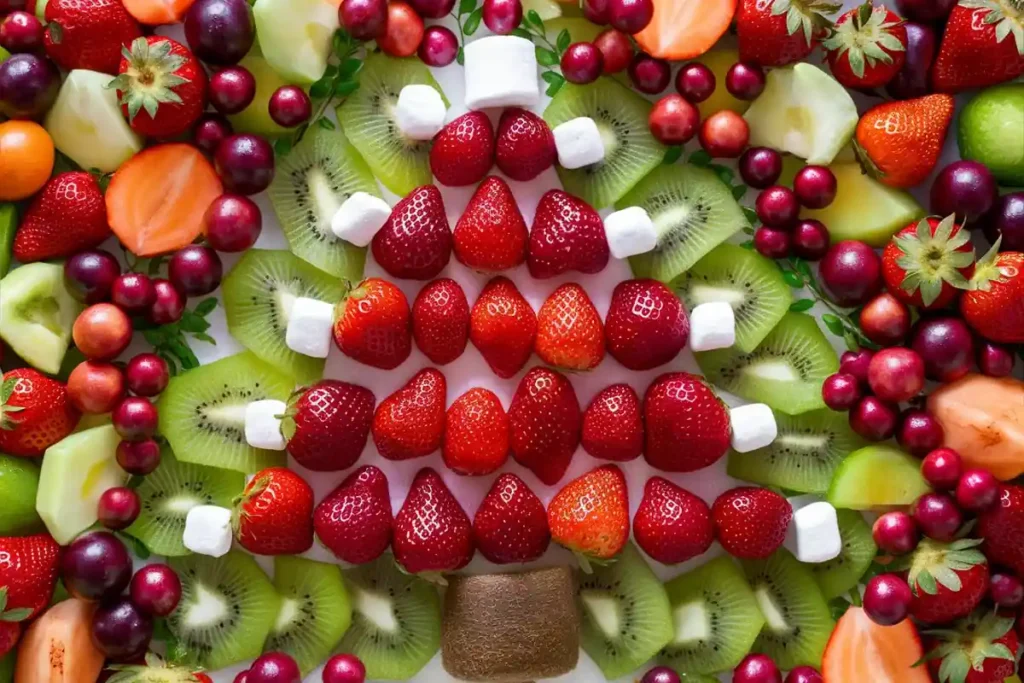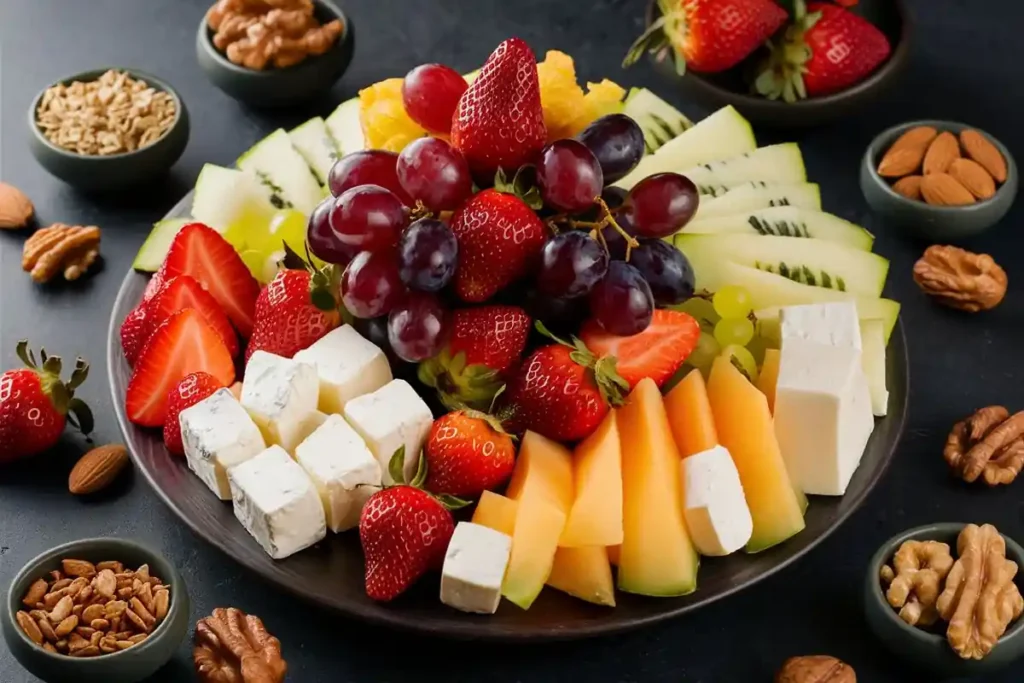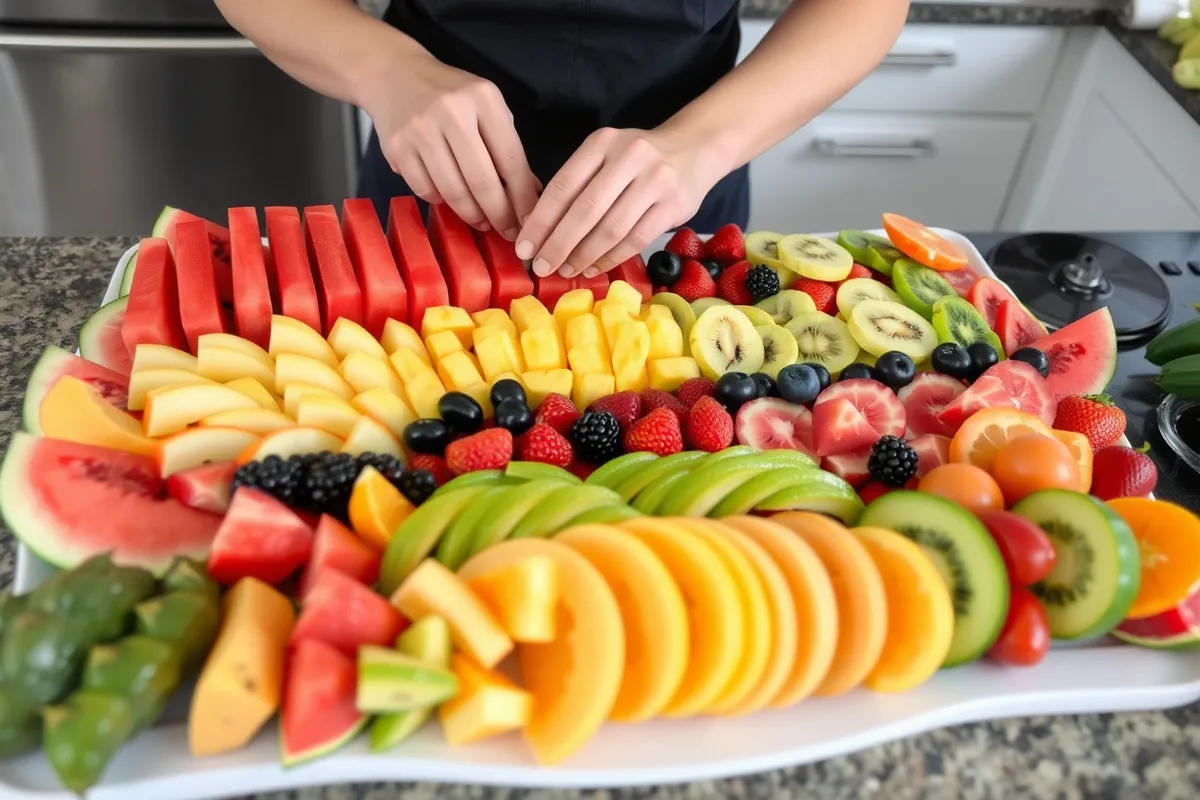A well-prepared fruit platter is a colorful, healthy, and refreshing addition to any event or meal. Whether you’re hosting a family gathering, a summer barbecue, or simply looking for a beautiful way to present fruit at breakfast, a well-arranged platter can make all the difference. In this article, we’ll guide you on how to prepare a fruit platter, including tips on choosing the best fruits, arranging them effectively, and ensuring it stays fresh and inviting.
Why a Fruit Platter is Perfect for Any Occasion
Fruit platters are versatile, healthy, and visually appealing. They can be made with a variety of fruits that suit any dietary preference or season. Moreover, fruit platters provide a nutritious option for guests, making them a great alternative to sugary desserts.
Creating the perfect fruit platter is easy when you understand the fundamentals of fruit selection, cutting, and arrangement. For a step-by-step guide to mastering the art of making a fruit tray, read on. Here are some great resources to get started on basic fruit handling techniques: Food Safety for Fresh Produce and Healthy Eating Guide. These sources are helpful for beginners who are unfamiliar with selecting or preparing fresh fruit.
For instance, learning about the proper handling of fruits can help prevent contamination. Additionally, arranging fruit in a decorative way creates a visual attraction for your guests. To delve deeper into fruit decoration techniques, check out this guide on food presentation.
What to Consider Before Making a Fruit Platter
To effectively answer the question of how to prepare a fruit platter, there are several factors to consider:
- Occasion and Audience: Consider what kind of event you are preparing for. A family brunch might call for a simpler platter, while a wedding reception would require a more elaborate presentation.
- Seasonal Fruits: Choosing in-season fruits will ensure that the fruit is at its best flavor and texture. Seasonal fruits also tend to be more affordable.
- Fruit Variety: A diverse color palette is key to an attractive fruit platter. Think about mixing different colors, shapes, and sizes to create visual interest.
- Quantity: Think about the number of people you are serving. You’ll need more fruit for larger gatherings, and this will also affect your choice of fruit types and the size of your platter.
Selecting the Best Fruits for Your Platter
The ideal fruit platter contains a mix of sweet and tart flavors. Here are some great options for different fruits to add to your platter:
- Berries: Strawberries, blueberries, blackberries, and raspberries are great choices. They add vibrant color and are bite-sized, making them perfect for guests to pick up.
- Melons: Watermelon, cantaloupe, and honeydew melons are juicy and easy to shape. Their bright hues create a lovely visual.
- Grapes: Use red, green, or even black grapes to add texture. Grapes also work well to fill gaps in the platter.
- Citrus: Oranges, tangerines, and blood oranges bring a zesty punch to your fruit platter. They can be sliced or peeled to create unique textures.
- Pineapple: Pineapple is both delicious and decorative, with a juicy burst of flavor.
- Kiwi: This adds both visual interest and a slightly tart flavor to balance the sweetness of other fruits.
- Apples and Pears: To prevent browning, dip apple and pear slices in lemon or orange juice before adding them to the platter.
Consider combining a variety of these fruits to make a platter that is vibrant, full of different textures, and balanced in flavor.
How to Prepare and Cut Fruits for Your Fruit Platter
To make your fruit platter look visually impressive, the way you cut the fruit is essential. Cutting different fruits into different shapes adds variety and interest:
- Melons: Use a melon baller to create round pieces, or cut them into cubes.
- Pineapple: Cut off the skin, remove the core, and slice it into rings or wedges.
- Strawberries: Slice in half or leave them whole with stems for a natural touch.
- Kiwi: Slice into rounds, or use a small cookie cutter to create fun shapes.
- Citrus: Cut into rounds, wedges, or peel and segment.
Always make sure to keep a sharp knife handy. Sharp knives are safer than dull ones because they allow for cleaner cuts with less effort.
Important Tips for Preparing Fruits
- Wash and Dry: Always wash all the fruits before cutting. Dry them properly to ensure there is no excess moisture on the platter.
- Preventing Browning: Dip fruits like apples and pears in lemon juice to stop them from browning.
- Keep it Fresh: If you are preparing the platter ahead of time, store it in the fridge to keep the fruits fresh and crisp.
Arranging Your Fruit Platter
Arranging fruits in an aesthetically pleasing way makes the platter more appealing. Here are some tips for arranging your fruit platter:
- Start with Large Fruits: Arrange the larger fruits, like melon slices or pineapple wedges, first. Place them on different sections of the platter to create a structure.
- Fill the Gaps: Use smaller fruits, such as berries or grapes, to fill any empty spaces between larger pieces.
- Group Similar Colors: Create clusters of similarly colored fruits. For example, place all the berries in one area, the melons in another, and the citrus fruits together. This helps to create an organized and attractive look.
- Add Garnishes: Garnishes like fresh mint leaves, edible flowers, or even a few nuts can add the perfect finishing touch to your platter.
- Layering and Texturing: Add layers and build heights with different fruits. The different levels add dimension and make the platter visually interesting.
Practical Tips for Serving Your Fruit Platter
Serving a fruit platter can be as easy as simply placing it on the table, but there are some extra touches that can make it more enjoyable:
- Serve with Dips: Offer fruit dips like honey yogurt or a chocolate sauce to make it extra special.
- Cold and Crisp: Keep the fruit platter in the fridge until it’s time to serve to ensure the fruit is cold and fresh.
- Portion Sizes: Cut fruits into bite-sized pieces to make it easy for guests to pick them up. This also encourages people to try a variety of fruits.
Advanced Fruit Platter Ideas for Special Occasions
When preparing a fruit platter for a special occasion, there are some advanced techniques and ideas you can incorporate to elevate its presentation. Here are a few ways to make your fruit platter stand out:
Themed Fruit Platters

For events such as baby showers, birthdays, or holidays, you can create themed fruit platters to fit the mood of the occasion. Some ideas include:
- Baby Shower: Use a mix of blue and pink fruits, such as strawberries, blueberries, and watermelon cut into baby-themed shapes (e.g., teddy bears or bottles).
- Christmas Party: Arrange red and green fruits such as strawberries, kiwi, and grapes to resemble a Christmas tree. Use blueberries and marshmallows as “ornaments” for added decoration.
- Valentine’s Day: Create a heart-shaped platter using watermelon and strawberries. Add chocolate-dipped fruit for an extra indulgent touch.
Themed fruit platters not only serve as a tasty treat but also add a decorative element that enhances the ambiance of the event.
Fruit Skewers and Kabobs
For a unique twist on a traditional fruit platter, consider serving the fruit as skewers or kabobs. This presentation style is especially popular for outdoor events like barbecues or garden parties. Here’s how to do it:
- Alternate Colors: Thread fruits of different colors, such as grapes, pineapple chunks, kiwi, and strawberries, onto wooden skewers. The alternating colors create a visually appealing effect.
- Serve with a Dip: Arrange the fruit kabobs on a platter and serve them with a yogurt-based dip or a honey cream cheese dip.
- Kid-Friendly Option: For children’s parties, use small and colorful skewers or even food-safe popsicle sticks. You can even make a rainbow pattern for extra fun.
Fruit skewers are easy to serve, mess-free, and make for a perfect grab-and-go option, especially for children.
Fruit Platters with Cheese and Nuts

Adding cheese and nuts to your fruit platter can elevate the flavor profile, making it perfect for more formal gatherings or as a starter for dinner parties. Here are some suggestions:
- Cheese Options: Add cubes of mild cheese like cheddar, gouda, or brie to the platter. The creaminess of the cheese pairs beautifully with the sweet and juicy fruits.
- Nuts: Incorporate a few small bowls of almonds, cashews, or walnuts. These nuts add a crunchy texture and complement the flavors of both the fruit and cheese.
- Charcuterie Touch: For an even more sophisticated platter, add some cured meats like prosciutto or salami. This creates a perfect combination of sweet, savory, and salty flavors.
This kind of mixed platter works particularly well for holiday parties or cocktail hours when you want something a little more substantial than just fruit.
Decorative Serving Platters
The platter or tray you use to serve your fruit can make a significant difference in how your arrangement looks. Here are some ideas for choosing the right serving dish:
- Wooden Boards: Wooden cutting boards provide a rustic look and feel, which is perfect for informal gatherings or outdoor events.
- Tiered Stands: Tiered stands add height and allow you to display more fruit without taking up much table space. They also add an element of elegance.
- Color-Coordinated Platters: Use platters that complement the colors of your fruit. For example, a white platter makes the vibrant colors of your fruits pop, while a bright-colored platter can add extra cheer.
Using an interesting serving dish can enhance the visual appeal of the fruit platter and contribute to the overall table decor.
Carved Fruit Displays
If you want to take your fruit platter to the next level, consider incorporating carved fruits. This technique takes time but can really impress your guests:
- Watermelon Basket: Carve a watermelon into a basket shape and fill it with mixed fruit. This works well for summer parties and adds a wow factor to your display.
- Fruit Flowers: You can carve fruits like apples, strawberries, and pineapples into flower shapes and arrange them on the platter. This adds a decorative touch that is especially effective for brunch or garden parties.
- Pineapple Boat: Cut a pineapple lengthwise and use the two halves as boats to hold smaller fruits. This works great for tropical-themed events.
Carved fruit displays are time-intensive but can leave a lasting impression on your guests, making your event even more memorable.
Tips for Storing Leftover Fruit Platter
It is quite common to have leftovers from a fruit platter, especially if you prepare a generous amount. Here’s how to store leftover fruit so it stays fresh and tasty:
- Refrigeration: Place any leftover fruit in an airtight container and store it in the fridge. Make sure the container is tightly sealed to prevent the fruit from drying out.
- Use Lemon Juice: If you have leftover apples, pears, or bananas, sprinkle a little lemon juice on them before refrigerating to help prevent browning.
- Freeze for Later: Some fruits, such as berries and grapes, can be frozen and used later in smoothies or as an icy treat. Simply spread the fruits out on a baking sheet, freeze them for a few hours, and then transfer them to a freezer-safe container.
- Fruit Salad: Leftover fruit can easily be turned into a fruit salad. Mix the leftover pieces, add a little honey and some chopped mint, and you have a quick and delicious snack for the next day.
Adding Extra Elements for Enhanced Presentation
While fruits are naturally vibrant and appealing, adding extra elements can elevate the look and make it truly unique. Here are some additional decorative elements you can incorporate:
Edible Flowers
Edible flowers can add a whimsical and elegant touch to a fruit platter. Flowers like pansies, violets, or marigold petals are safe to eat and can enhance both the look and taste of the fruit platter. Make sure to use flowers that are clearly labeled as edible and have not been treated with pesticides.
- Placement: Place the edible flowers around the platter or sprinkle them over the top for a more natural look.
- Flavor: Some edible flowers have mild, slightly sweet flavors, which can add an extra dimension to the platter.
Chocolate-Dipped Fruits
Adding chocolate-dipped fruits can provide a decadent twist to your fruit platter. Strawberries, apple slices, or bananas dipped in dark or white chocolate offer a contrasting flavor that pairs well with the natural sweetness of fresh fruit.
- Chocolate Types: You can use dark, milk, or white chocolate. Dark chocolate is great for those looking for a less sweet option, while milk and white chocolates offer a creamier texture.
- Toppings: Sprinkle the chocolate-dipped fruits with nuts, shredded coconut, or colorful sprinkles before the chocolate hardens to make them even more festive.
Fruit Sauces and Compotes
Fruit sauces, compotes, or even flavored syrups can add an interesting element to your fruit platter. You can prepare these ahead of time and serve them alongside the platter for dipping or drizzling.
- Berry Compote: Make a simple compote with mixed berries, sugar, and a squeeze of lemon juice. Cook until the berries release their juices and thicken slightly.
- Honey-Yogurt Dip: A mix of Greek yogurt, honey, and a dash of cinnamon creates a simple yet delicious dip that pairs well with all fruits.
Adding a dipping sauce is a fantastic way to elevate the flavors and offer something extra for guests who might want more than just fresh fruit.
Health Benefits of a Well-Balanced Fruit Platter
Including a wide variety of fruits in your diet has numerous health benefits. Here’s why incorporating a fruit platter into your event is a healthy choice for your guests:
Rich in Vitamins and Minerals
Fruits are a great source of essential vitamins and minerals, such as vitamin C, potassium, and folate. These nutrients help support overall health, including immune function and heart health.
- Vitamin C: Citrus fruits like oranges and tangerines are rich in vitamin C, which supports immune health.
- Potassium: Bananas and melons are high in potassium, which helps regulate blood pressure.
High in Fiber
Most fruits are naturally high in fiber, which aids in digestion and helps keep you full for longer periods. Fiber also plays an important role in regulating blood sugar levels and reducing cholesterol.
- Berries and Apples: Berries and apples are especially high in fiber, making them excellent choices for a balanced fruit platter.
Hydration
Fruits such as watermelon, cucumber, and oranges have high water content, which helps keep your guests hydrated—particularly important during hot summer months.
Including a variety of hydrating fruits in your platter is an excellent way to keep guests refreshed.
Natural Antioxidants
Fruits like berries, grapes, and kiwi are packed with antioxidants, which help protect the body from free radical damage and reduce inflammation. Including a mix of different fruits ensures you are providing a broad range of antioxidants.
Low in Calories
Fruits are naturally low in calories while being nutrient-dense, making them a healthy option for those watching their calorie intake. By including a variety of fruits, your platter can be both satisfying and healthy.

